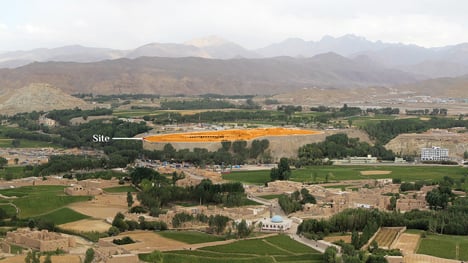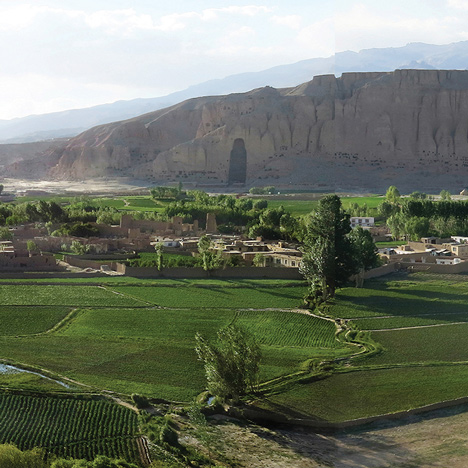UNESCO launches competition to design cultural centre in war-torn Afghanistan
News: international heritage body UNESCO has launched a competition to design a cultural centre on the boundary of the Bamiyan Valley site, which housed two giant seventh-century statues of Buddha that were destroyed by Taliban militants in 2001.
UNESCO has teamed up with the Afghan government's Ministry of Information and Culture to launch the Bamiyan Cultural Centre Design Competition for a building that will provide storage areas for archaeological and traditional artefacts, as well as space for cultural programmes and research facilities.
The heritage organisation said that the project would be a "cornerstone" in the nation's efforts to preserve its culture and build new cross-cultural connections that would help promote peace.

The cultural centre will occupy a prominent site in the edge of the Bamiyan Valley in the central highlands of Afghanistan – a key Buddhist site on the ancient Silk Road trading route. A number of historic structures and art works are scattered throughout the valley.
The foothills of the cliffs along the valley are pockmarked with caves that were used as Buddhist monasteries, chapels and sanctuaries dating from between the third and fifth century. The cliffs themselves housed two giant seventh-century carvings of Buddha, standing at 55 metres and 35 metres tall respectively. These occupied niches carved into the cliff face, which still remain following the destruction of the statues by the Taliban in 2001.
Earlier this year, UNESCO stepped in to prevent an unauthorised team of German archaeologists from reconstructing the statues using iron rods, brick and concrete.
"The Bamiyan Cultural Centre project is a one of a kind project because funding for cultural projects is often neglected in conflict zones. This is in part because their results are usually not visible in the short-term," said Koukaba Mojadidi, an architect based at UNESCO's Kabul office.

"However, cultural rights are human rights and a sense of shared cultural attachment is arguably a prerequisite for achieving sustainable peace. International and national entities are uniting around the idea that building a nation through cultivating culture is an important way to sustain peace and advance positive aspirations for the future."
The brief calls for an adaptable space that can be of benefit to as wide a group of users as possible, hosting community events and civic meetings as well as serving as a public cultural and education facility. The building will also need to provide space for arts advocacy work and "cultivate cultural exchange" between the country's different ethnic groups.
With a budget of $2.5 million (£1.6 million), the scheme is expected to start on site shortly after a winner is selected with a 24 month completion schedule. The winner will be chosen by a seven-strong jury, which includes Elizabeth O'Donnel, dean of the Cooper Union school of architecture in New York, and Afghan architect and CEO of the Aga Khan Trust for Culture, Ajmal Maiwandi.
"We have been given the most prominent site overlooking the Buddha Cliffs by the Ministry of Information and Culture and the Bamiyan Municipality," said Mojadidi. "This site is historical and now, through this design competition, people around the world will have the opportunity to make a contribution to world heritage."
Architects, engineers, designers and students are all eligible to enter the single-stage competition as long as one team member is a registered architect. As well as seeing their project built, the winner will receive a top prize of $25,000 (£16,000), while four runners up will also receive $8,000 (£5,100).
There is no entry fee. Financial support for the competition is being provided by the Republic of Korea. The deadline is 22 January 2015, and more information is available from the Bamiyan Cultural Centre Design Competition website.